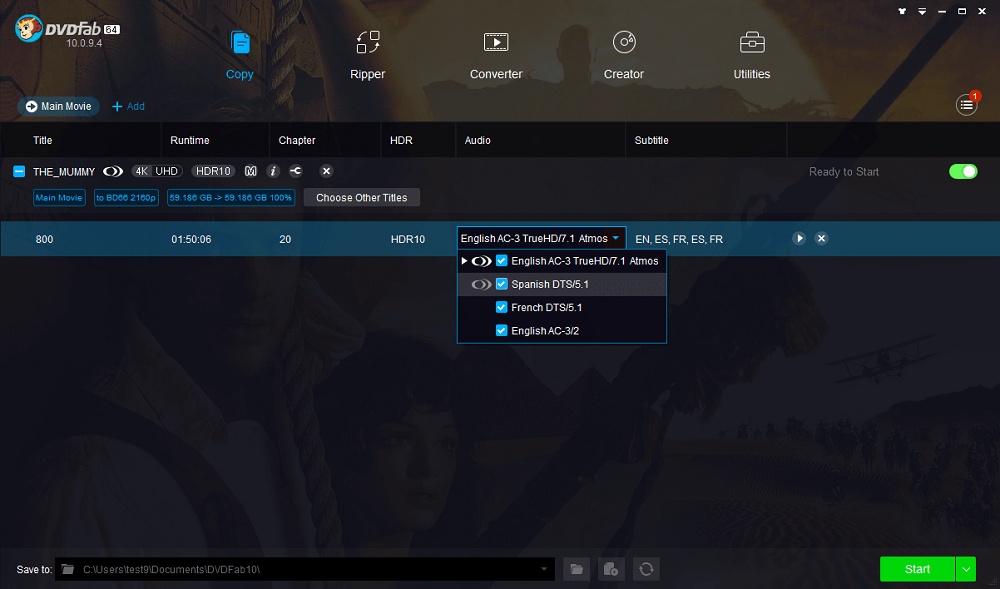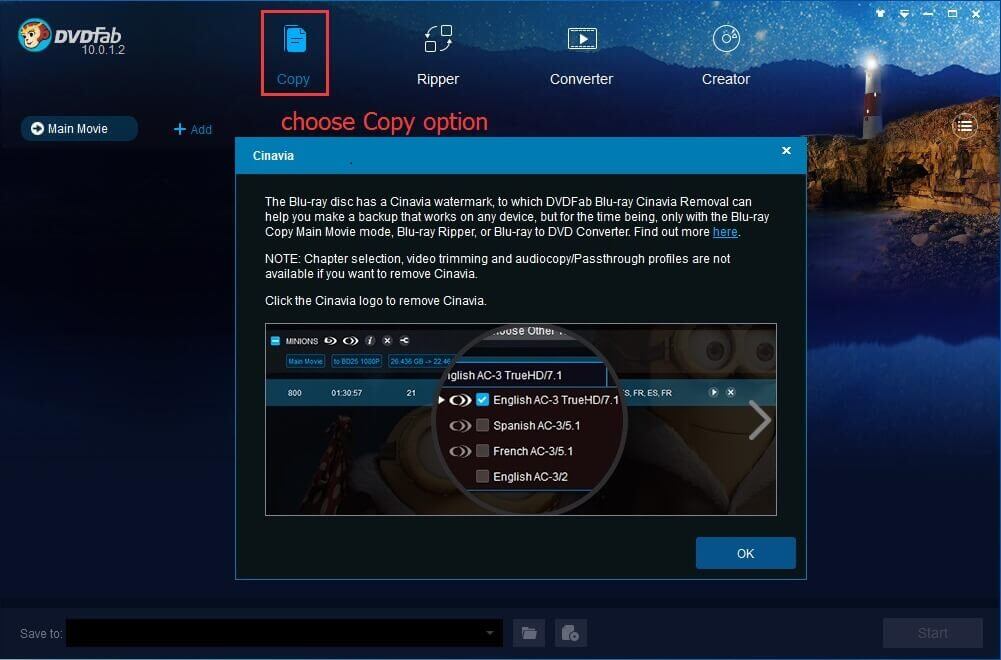

Since most receivers probably don’t support Cinavia, there should be no issue with playback. That would make sense, though, as it would be left up to the receiver to blank the audio based on Cinavia. The PS3, though, doesn’t seem to check for Cinavia if the playback is through the optical output port (i.e., when playing back through an optical receiver). Sony, however, does check for all media types. As I explained, some players don’t check for Cinavia for certain types of media (i.e., USB or Network streaming). With that said, there are ways of getting around this on certain devices. Once the Cinavia protection is detected on the media, the hardware activates and continues to look for the information it needs to make sure the content is ‘legitimate’. In short, it’s not as easy as that may sound. If you attempt to stop and start the movie, it will play audio again for a few seconds and then stop playing with a warning.

Dvdfab cinavia removal not working movie#
For example, if you rip a Blu-ray disk protected by Cinavia and then burn it to a BD-rom disk, the movie will stop playing audio at around the 20 minute mark and display a warning.
Dvdfab cinavia removal not working Ps4#
Since Sony is the biggest proponent and user of this technology, all Sony players, including the PS3 and PS4 along with their standalone Blu-ray players will not play back Cinavia protected material if it doesn’t continue to pass the subcode tests. These alternative sources are not always under Cinavia protection even if the specific movie has an embedded subcode. For example, some Blu-ray players can play media from a variety of sources beside BD disks (e.g., USB drives, Network servers, etc). Not all players support the Cinavia protections from all media types. Not all movie titles use Cinavia to protect their content. CAM copies of theatrical releases will never play because the audio subcode is entirely different for theatrical films and the Blu-ray player will recognize that theatrical subcode and stop audio playback. This means hardware Blu-ray players from pretty much any manufacturer will be affected by Cinavia protection if the title supports it. If the Cinavia subcode is present, the player will blank the audio track if the AACS key is mismatched. If you have run into any such releases, please leave a comment.Īll consumer Blu-ray players manufactured after 2012-2013 are required to support Cinavia. But, I have yet to confirm any DVDs currently using this technology. I have also read there is a third use emerging… to protect DVD releases. If the AACS key matches the value from the watermark, the check passes and the audio continues to play. Commercial Blu-ray disks play because the audio track uses AACS with a key likely embedded within the subcode watermark. For this reason, films destined for theatrical releases will never play in a consumer Blu-ray player ever (including players such as the PS3, PS4 or Xbox One).

But, that subcode is different from theatrical films. For the same reason as theatrical releases, Blu-ray films are also embedded with a subcode. The second use is to protect Blu-ray copies of films from being pirated. After all, what is a movie without audio? recorded from the screen), the Cinavia watermarking will also be recorded in the audio. So, if a theatrical release is CAMed (i.e. Keep in mind that just because the subcode cannot be heard by human ears, it doesn’t mean it can’t be heard and decoded by a specialty hardware chip. Because the audio watermarking is audible, but imperceptible, it will be picked up by microphones (strictly because of the Hz range where the subcode is embedded).

The first use is to protect theatrical releases from being pirated. There are two types of known uses of Cinavia watermarking. How is Cinavia used in the film industry? Likely, it’s also an analog audio-based digital carrier subcode (like a modem tone) that contains data about the title being played. This Cinavia watermark audio subcode seems to be embedded at a phase and frequency that can be easily isolated and extracted from an audio soundtrack, then processed and determined if it’s valid for the movie title being played back. No, it is solely created for industry media protection. Don’t be fooled by the ad with smiling children on the Verance site, this has nothing to do with helping make audio better for the consumer. Let’s explore.Ĭinavia is an audio watermarking technology created by the company Verance where an audio subcode is embedded within digital audio soundtracks at humanly imperceptible levels, but at a level where a DSP or other included hardware chip can read and decode its presence. If you’re into playing back movies on your PS3, you might have run into an annoying problem where your movie plays for about 20 minutes, then the audio suddenly drops out entirely with a warning message on the screen.


 0 kommentar(er)
0 kommentar(er)
